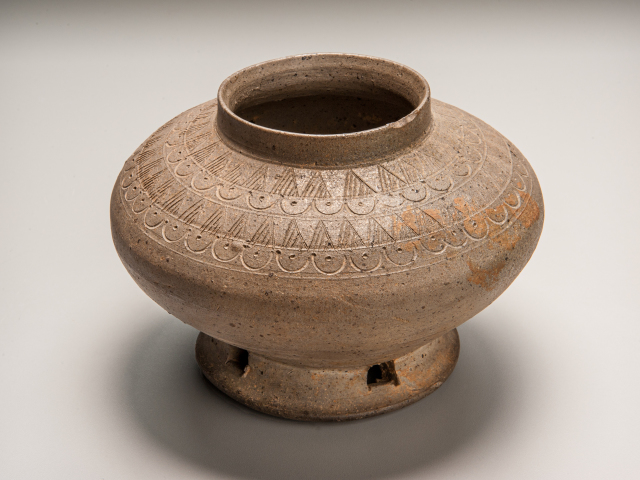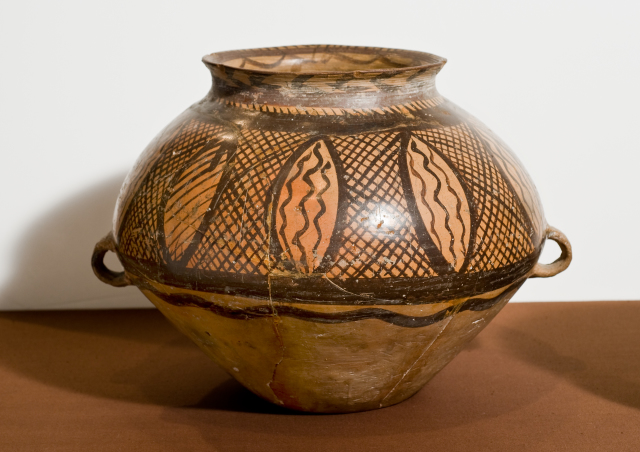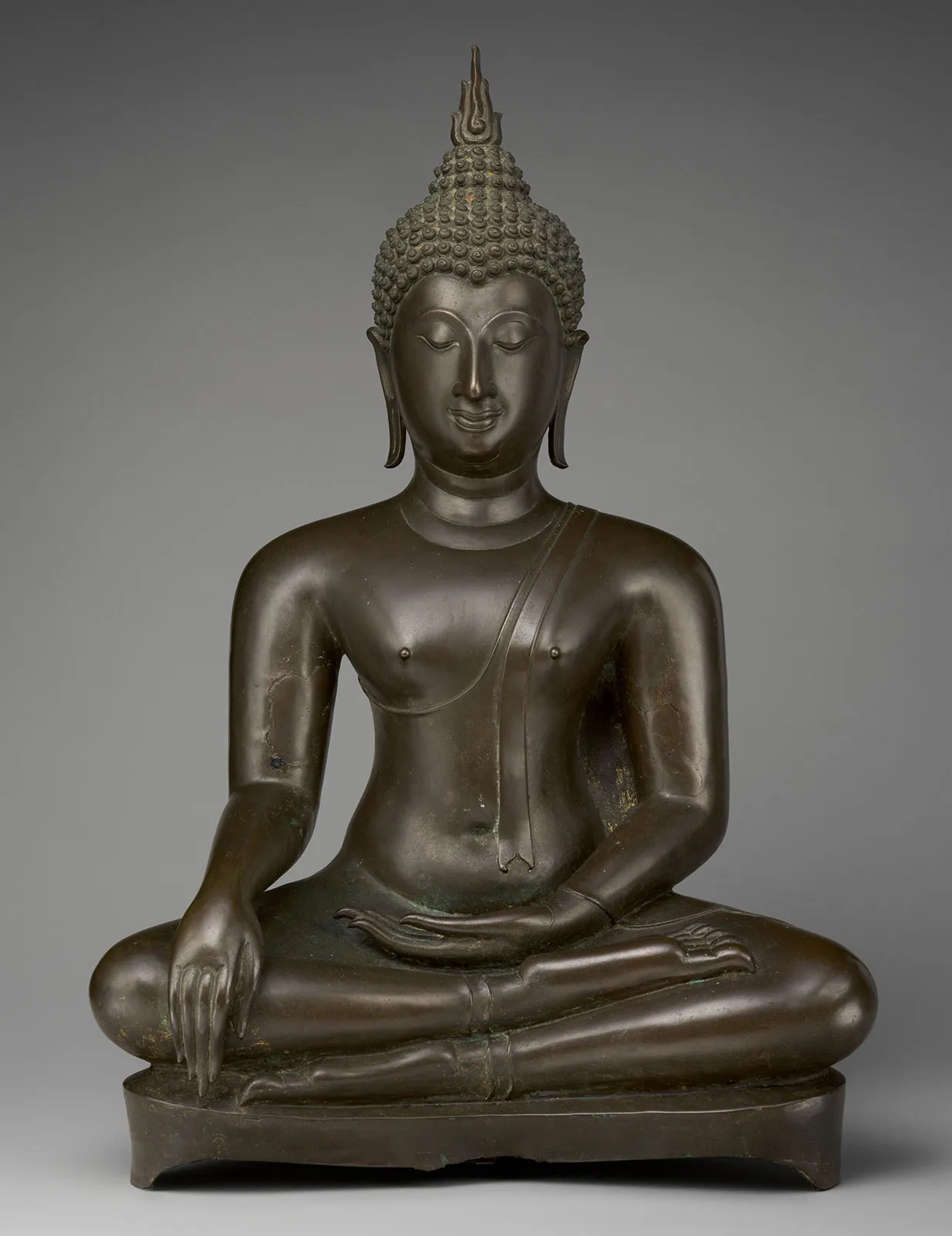Funerary Urns
The first image shown is a funeral urn found in Korea. The urn was made in the 7th century during the Unified Silla period. The urn shown is an “inner” urn, which was used to hold cremated remains. Though it is not shown in the image, the inner urn was inserted into an outer stone casket, made of granite, which served as a protective container for the inner urn. The body of the inner urn has a round base with a short mouth, and a ledge for the lid. The body of the urn is decorated with patterns and shapes.
After the introduction of Buddhism to Korea in 372CE, Korean burial practices underwent a significant change. The traditional custom of burying the deceased in tombs was replaced by the practice of cremation. Although cremation had already existed before the unification of the Three Kingdoms, it was the ruling classes of Silla, following unification, who began adopting cremation funerals, leading to its widespread acceptance. The ashes of the cremated remains were either scattered in mountains or rivers or placed in urns for burial.



